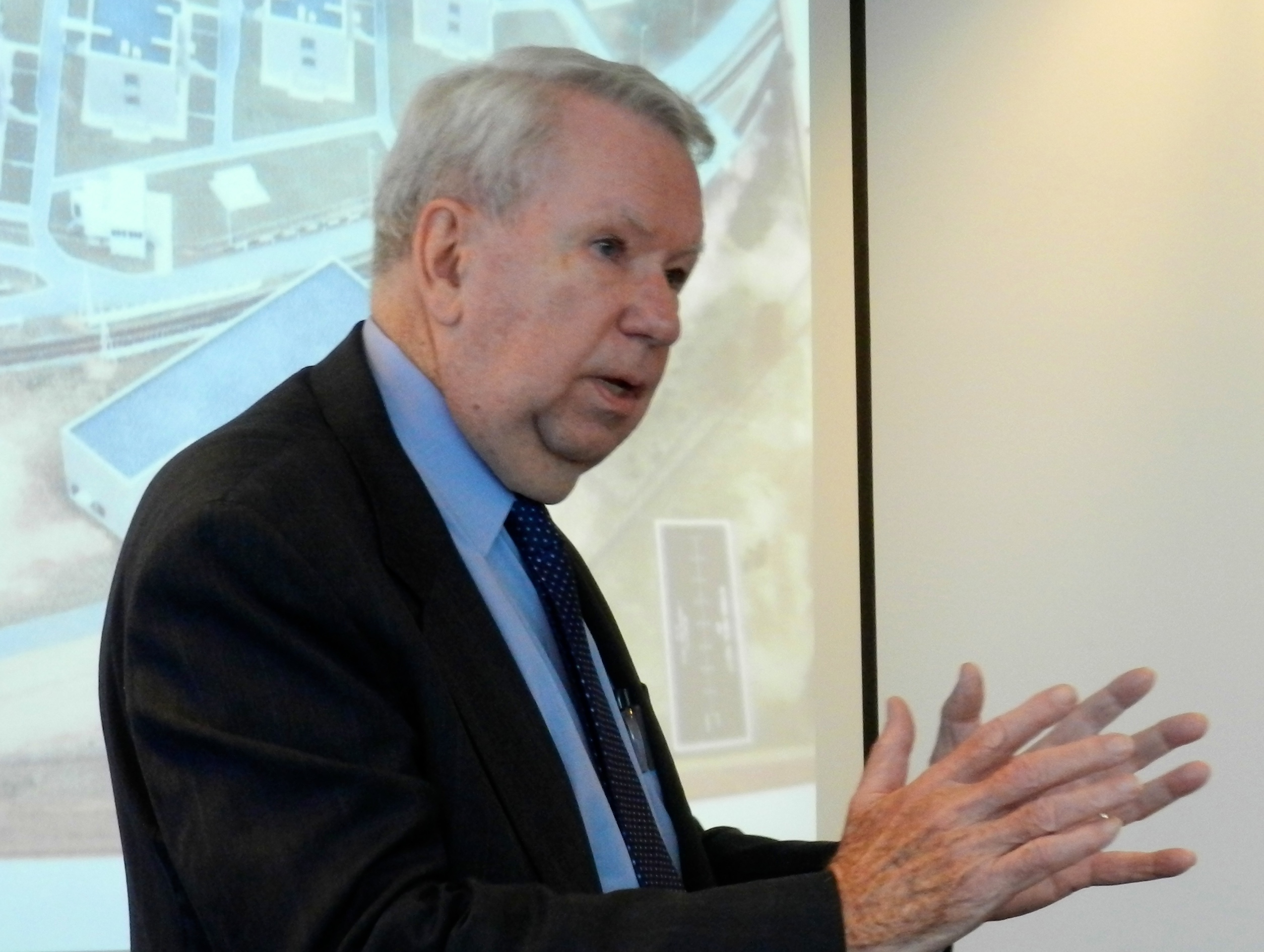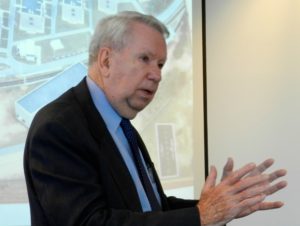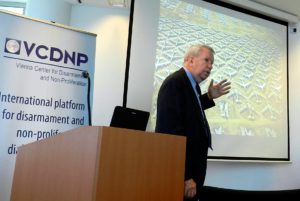

On 1 September 2016, the VCDNP hosted a seminar by Dr. Edward Ifft on the current status of the Strategic Arms Reduction Treaty (New START) between the United States and the Russian Federation. With the treaty halfway through its nominal lifetime of 10 years, the timing was appropriate for examining how the implementation process is proceeding. Dr. Ifft, a U.S. Foreign Service Officer, delivered this presentation in his capacity as Adjunct Professor in the Security Studies Program at the Walsh School of Foreign Service at Georgetown University. In his introductory remarks, Dr. Ifft outlined the challenges that arms control is facing. He referred to violations or problems with the Intermediate-Range Nuclear Forces Treaty and the Treaty on Conventional Armed Forces in Europe, stressed that the Conference on Disarmament in Geneva “has not done anything for 20 years”, and, in this context, noted that the positive accomplishments of New START could be considered one of the few bright spots in arms control.
Dr. Ifft explained in detail the provisions of New START. The treaty imposes fundamental constraints on launchers and heavy bomber airframes, and limited constraints on ballistic missiles or warheads, especially in comparison with START I. New START fixes central limits on the number of deployed (700) or not (800) intercontinental ballistic missiles, submarine-launched ballistic missiles and heavy bombers, and on the number of warheads (1550) that can be deployed on strategic nuclear delivery vehicles. Dr. Ifft navigated the audience through the many (90) New START definitions. A “warhead”, for example, is not considered a physical object, but a mathematical unit of account. The definition of a “deployed” missile is less academic: under START I, it was assumed that a launcher contained a missile; New START considers “deployed” a missile that is actually emplaced on a launcher. Changing the status of a missile from “deployed” to “non-deployed” requires notification to the other party – a measure which contributes to greater transparency. Dr. Ifft then introduced the (dis)counting rules, which do not take into account capabilities or loading of heavy bombers and do not distinguish between conventional or nuclear warheads on ballistic missiles. In any event, reductions in the numbers of strategic nuclear delivery vehicles are proceeding steadily. It is reasonable to assume that neither side will encounter difficulties in getting below the ceiling fixed for 2018. New START has significantly reduced the types of on-site inspections from 12 categories of facilities (in START I) to two: those where deployed systems are located and those where only non‑deployed systems are located. Dr. Ifft described the notification, site designation, arrival and (pre‑)inspection procedures for both categories of facilities before recalling that official reports have certified that both parties are in compliance with the terms of the treaty.

Dr. Ifft illustrated a number of fundamental tasks with which arms control treaties have had to deal. Until now, the challenge has been to demonstrate that an object is non‑nuclear; in the future, the process will be reversed: how do you determine whether the object is a nuclear weapon? This will become relevant to ensure deep reductions. In highlighting lessons learned, Dr. Ifft stated that, on the one hand, the United States and the Russian Federation have become skilled in: conducting on‑site inspections; counting (non-)deployed launchers, missiles, bombers in declared locations; exchanging notifications and data. On the other hand, however, both countries have not gained significant experience in: agreeing on procedures for counting non-deployed warheads; eliminating warheads; verifying disposal of fissile materials; and dealing with non-compliance.
In his concluding remarks, Dr. Ifft discussed possibilities for the future of arms control. He recalled Obama’s 2013 Berlin speech, when the President announced his willingness to seek reductions in strategic and tactical nuclear weapons. This goal could be achieved within the verification system put in place by categories of facilities. Moscow, however, has not expressed any interest in pursuing this path. In Dr. Ifft’s view, it is premature to discuss possible extensions of New START, especially since Russia has explicitly stated that it has no intention of doing so. Dr. Ifft’s view is that the US and Russia could agree on more substantial reduction measures before the expiry of the treaty.